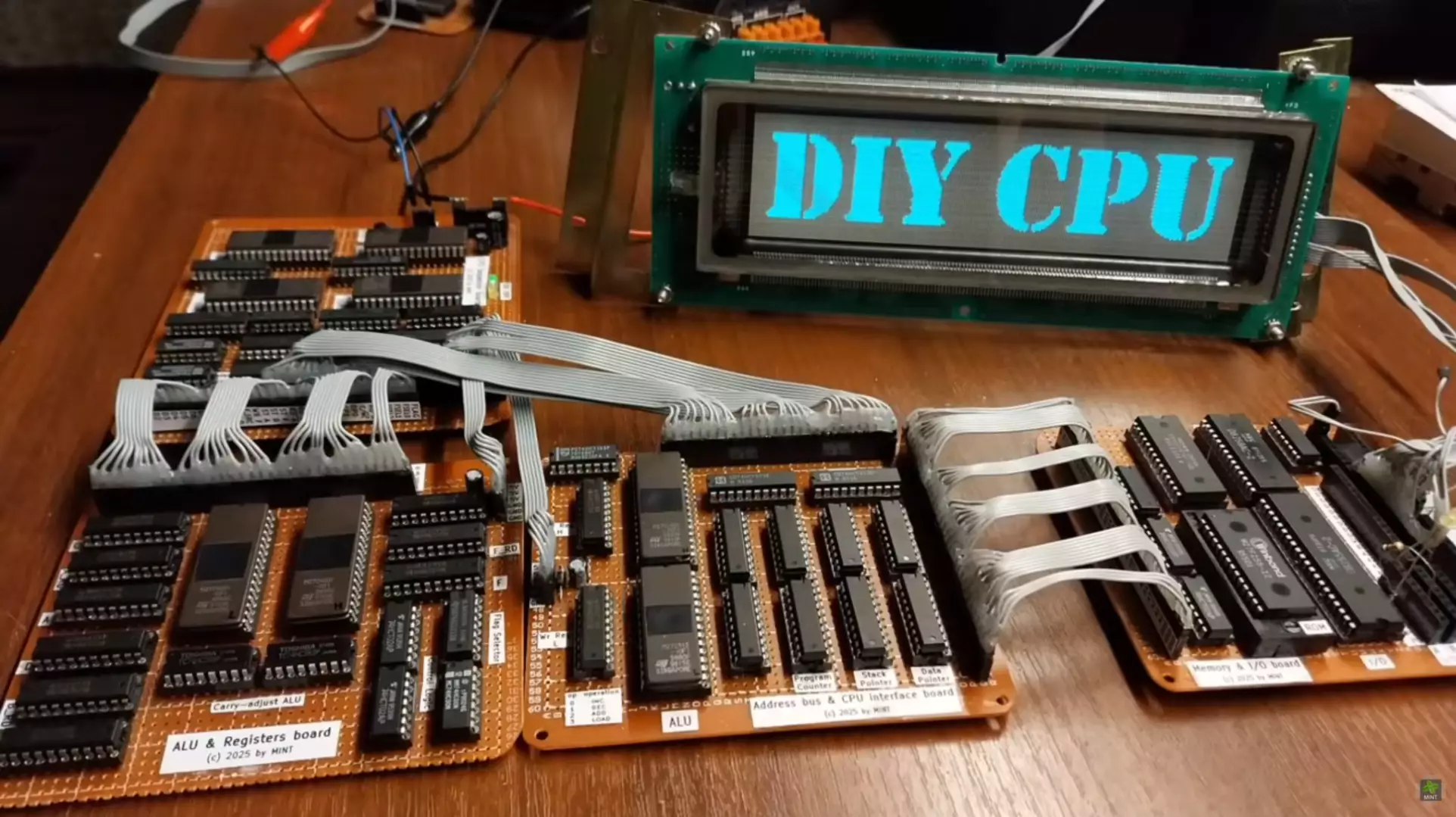The marvel of modern computing often feels distant from the hands-on experience of ordinary enthusiasts. Yet, in an inspiring display of ingenuity, a dedicated hobbyist has demonstrated that with enough passion and perseverance, the boundaries of possibility can be pushed far beyond the confines of commercial products. This story is not about buying the latest high-end gaming rig, but about crafting something truly unique—a homemade CPU assembled entirely from retro components, inspired by the earliest days of microprocessors. Such endeavors challenge the notion that building a powerful computer requires a team of engineers and a hefty budget. Instead, they prove that curiosity, knowledge, and a soldering iron can achieve extraordinary feats.
The project, initiated by Polish YouTuber Majsterkowanie i nie tylko (MINT), exemplifies hands-on engineering in its purest form. Over a span of three months, MINT collected vintage memory chips and period-appropriate components, transforming what many might dismiss as obsolete junk into the building blocks of a functional processor. This meticulous dedication underscores a profound truth: understanding the fundamentals of computing isn’t just an academic pursuit but a gateway to innovation. With patience and determination, it’s possible to deconstruct the complexities of digital logic and assemble a working microprocessor from scratch.
Revisiting the Roots of Computing
At the heart of this project is a chip that harks back to the dawn of personal computing—the venerable Zilog Z80. This 8-bit microprocessor was pivotal during the late 1970s and early 1980s, powering everything from early home computers to portable devices. MINT’s decision to emulate this era conveys more than nostalgia; it’s an educational exploration into how early processors functioned with limited resources, yet achieved remarkable reliability and flexibility. His approach illuminates that foundational concepts like binary logic, memory access, and instruction execution are all governed by physical circuits—principles no less relevant today.
The true challenge lay in transforming discarded memory chips into a fully operational CPU capable of interpreting and executing commands. The process involved not only extensive soldering but also creating bespoke circuitry that mimicked the behavior of a classic microprocessor. Hours of coding were required to program the CPU to perform basic functions—an achievement that emphasizes how programming and hardware design are two sides of the same coin. This fusion of software and hardware acts as a testament to the depth of understanding needed to build even a simple computer, marking a significant milestone for hobbyists and learners alike.
Lessons from a Modern-Day Alchemist
What makes MINT’s project truly compelling isn’t merely the technical achievement but its philosophical message: the accessibility of understanding and creating technology. By constructing a CPU from vintage parts, he demystifies digital electronics, stripping away the abstract layers that often shroud modern devices. Instead of relying on black box chips designed for mass production, he learns how each component interacts at a fundamental level. This deep dive fosters a deeper appreciation of what goes into the devices we use daily—an insight that’s often missing in the era of sleek, integrated circuits.
Moreover, this project signifies a broader cultural shift towards practical, DIY innovation in technology. It serves as a reminder that the future of computing isn’t solely about ever-increasing specifications but about nurturing curiosity and resilience. Building a processor from scratch demonstrates that innovation doesn’t have to be confined to corporate R&D labs; it can be sparked by individuals motivated by a desire to understand and create. In a broader sense, such projects challenge the status quo, inspiring a new generation of engineers, tinkerers, and dreamers to look inward and discover their own capacities for problem-solving.
The Future of Retro-Inspired Innovation
While this homemade CPU may not replace consumer hardware, it embodies a spirit of experimentalism that’s vital for technological progress. The project serves as a powerful educational tool, illustrating core principles of computing and encouraging hands-on learning. It sparks a sense of wonder that can reignite interest in STEM fields among young enthusiasts and seasoned hobbyists alike. Furthermore, it pushes the boundaries of what can be achieved on a modest budget, inspiring a grassroots movement towards more accessible hardware innovation.
In a way, this story emphasizes that the heart of technology’s evolution lies in understanding its roots. By building a CPU with his own hands, MINT bridges the gap between the past and the future—showing that the origins of computing are still accessible and full of potential for those willing to explore. His effort challenges us all to reimagine what’s possible with curiosity, patience, and a willingness to learn. We’re not just spectators of technological progress but active participants in its ongoing story—crafting, experimenting, and dreaming of what’s next.

